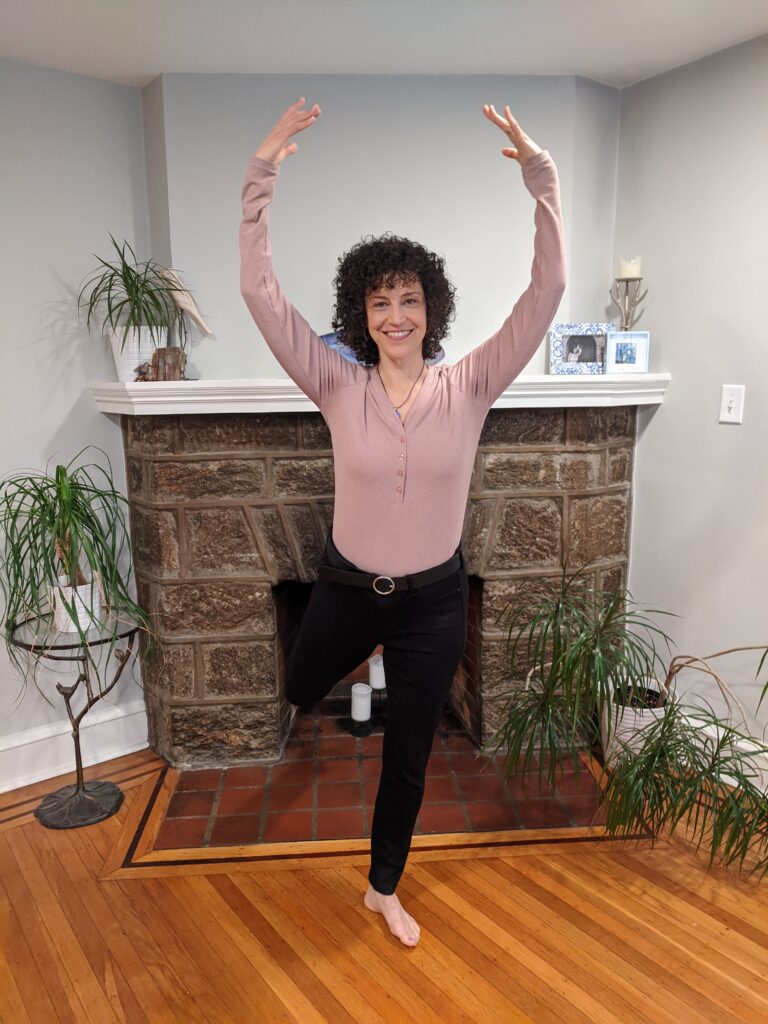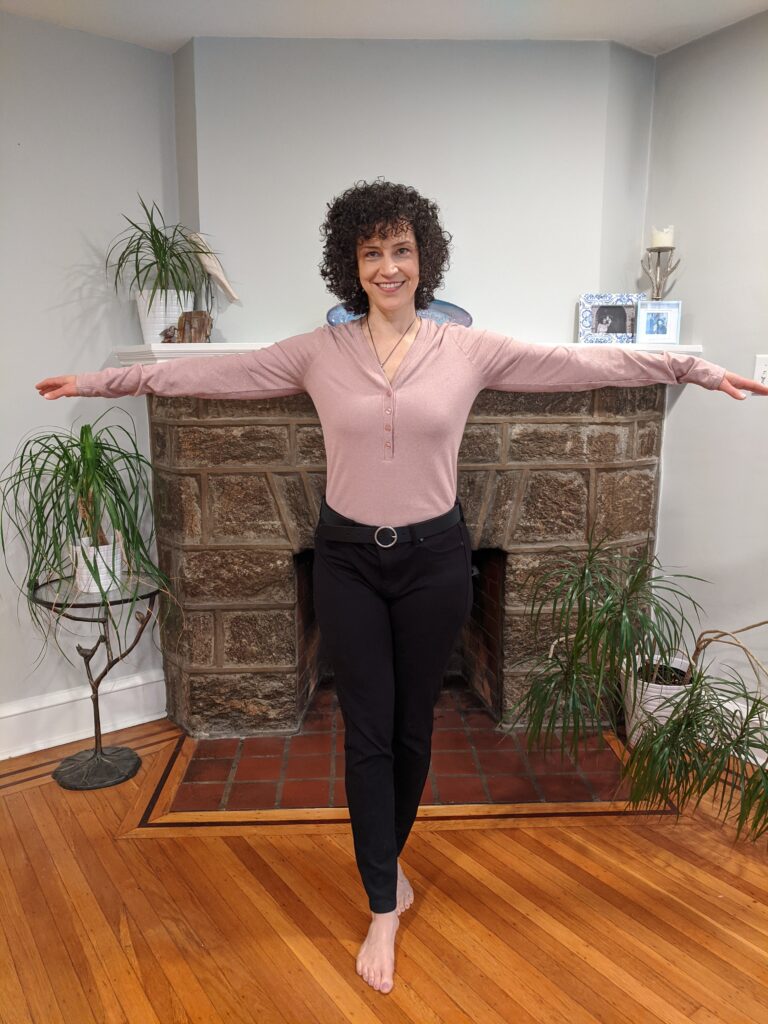
As we age, falls become a serious concern for many older adults and seniors. According to the Centers for Disease Control and Prevention (CDC), falls are the leading cause of fatal and nonfatal injuries among older adults. They can lead to physical injuries such as broken bones and head trauma, as well as emotional consequences like a loss of confidence and limited or no independence.
Falling itself doesn’t always have to be the issue ethier. Sometimes the risk alone is enough reason for concern. For example, my mother and father-in-law had to leave their beloved home of forty plus years because the risk of falling was too great.
Health issues left them unsteady and compromised to the point where we were no longer confident they could safely go up and down their stairs. Issues like this can be the precursor to falling and result in older adults leaving their homes before they wish to.
The good news is, however, that falls do not have to be an inevitable part of aging! Through proper balance training, seniors can reduce their risk of falling and maintain their independence. Here I will discuss the role of balance training in fall prevention for older adults and provide tips on how to incorporate balance exercises into daily routines.
Aging and Fall Prevention
One of the key strategies for fall prevention is balance training. Research has shown that balance training can significantly reduce the risk of falls among seniors by improving their balance, mobility, and overall physical function.
As I already mentioned, falls can result in non-fatal injuries, such as head injuries or hip fractures. As these can impact mobility and independence, it’s important to get ahead of these concerns by practicing some basic fall prevention techniques and exercises.
While the risk of falls increases with age, it is not an inevitable consequence of getting older. Many falls can be avoided by having the right preventions in place. These strategies involve addressing various risk factors that can contribute to falls, such as medical conditions, medication use, environmental hazards, and impaired balance and mobility.
In my experience, balance is an area in which you can make significant improvements through regular practice. We all have right and left differences in strength, stability, range of motion and coordination. We are the most stable and the most balanced when we address these disparities and target the weaker and/or tighter side to create more symmetry and close the gap in regards to our differences.
The Role of Balance Training in Fall Prevention
Studies have shown that balance training can help reduce falls by up to 50%. Balance training programs can be customized for different levels of ability and can include exercises such as standing on one leg, walking heel to toe, standing up from a chair without using one’s hands and rising from the floor using as few assists as possible.
Exercises like these are designed to improve overall stability, increase strength and flexibility, develop better coordination, and enhance the ability to control body movements.

Balance training and improved posture are interconnected. Our bodies move with more efficiency and ease when we are upright and balanced. When we are rounded forward, we are less stable and less steady. By practicing balance training, your stability, strength, posture and body awareness will also improve.
We strengthen what we practice, so I encourage my clients to build balance training into their everyday lives. For example, I brush my teeth while balancing on one foot and encourage my clients and students to do the same!
It is important to note that working on your balance is a continual and long-term strategy for fall prevention, not something that is a one and done deal. Older adults need to incorporate balance training exercises into their daily routine to maintain a healthy lifestyle and reduce the risk of falling.
The exercises do not have to be complicated and can be modified to suit your level of fitness and physical ability. The idea is to make sure you are doing them safely and regularly. It’s a marathon, not a sprint!
In addition to balance training, seniors can also benefit from strength training, improving flexibility, and cardiovascular exercises. All of these can help reduce the risk of falls. However, balance training should be at the core of any fall prevention program.
A Few Balance Training Exercises for Seniors
Let’s get to it! Listed below are simple balance training exercises that you can incorporate into your everyday life starting today. No props needed, although you may want to attempt these near a counter or wall that you can hold on to for support if needed. Be aware of your posture and engage your lower abdominals to set yourself up for better balance.
- Single-leg stand: Stand on one foot and hold the position for as long as possible. Repeat on the other foot. This exercise can be done while holding onto a stable object for support. Challenge: Do this exercise without holding onto anything for support. Close your eyes or look from side to side and up and down.
- Heel-to-toe walk: Place one foot in front of the other so that the heel of the front foot touches the toes of the back foot. Take a step forward and repeat with the other foot. This exercise can be done in a straight line. Challenge: Close your eyes.
- Standing leg raises: Stand with your feet hip-width apart and lift one leg straight out in front of you. Hold for a few seconds and then lower the leg. Repeat with the other leg. This exercise can be done while holding onto a stable object for support. Challenge: Do these without holding onto anything for support. Do several repetitions of these lifts and adding a resistance band above your ankles or knees or adding ankle weights.
- Balance with a ball: Stand on one leg and hold a balance ball in front of you with both hands. Move the ball in a circular motion or from side to side while maintaining your balance. Repeat with the other leg. Challenge: Have a catch with yourself or bounce the ball against a wall repeatedly.
- Side leg raises: Stand with your feet hip-width apart and lift one leg out to the side. Hold for a few seconds and then lower the leg. Repeat with the other leg. This exercise can be done while holding onto a stable object for support. Challenge: Do these without holding onto anything for support. Do several repetitions of these lifts and adding a resistance band above your ankles or knees or adding ankle weights.
- Heel raises: Stand with your feet hip-width apart. Lift and lower both heels. Repeat until you feel fatigued. Challenge: Do these without holding onto something for support, Play with tempo, and try using dumbbells.

- Leg raises behind you (hip extension): Stand with your feet hip-width apart and lift one leg behind you. Hold for a few seconds and then lower the leg. Repeat with the other leg. This exercise can be done while holding onto a stable object for support. Challenge: Do these without holding onto anything for support. Do several repetitions of these lifts and adding a resistance band above your ankles or knees or adding ankle weights.
If you are looking for something beyond basic exercise, consider looking at tai chi or yoga! Tai chi is an ancient Chinese practice that combines slow, flowing movements with deep breathing and mental focus, and has the capacity to reduce the risk of falls in older adults.
Like tai chi, yoga combines movement and breathwork to improve balance, flexibility, and strength. Many yoga poses involve balancing on one leg, making it an effective form of balance training for seniors.
If you are feeling more active and ambitious, hit the dance floor (or join my dance class geared towards older adults)! Dance is an ageless art form that emphasizes posture, coordination, balance, range of motion, strength and stability…ingredients that make for improved balance and healthier bodies.
By incorporating these exercises and/or practices into your fitness routine, you can improve your balance and reduce the risk of falling. It’s important to start slowly and gradually increase the intensity of the exercises as your balance improves.
If you are interested, I can provide guidance on the best exercises tailored to your individual needs and abilities.
Other Fall Prevention Strategies for Seniors
While balance training is crucial in fall prevention for older adults, there are other strategies that can help reduce the risk of falling. Some of these include:
- Environmental Modifications: Making changes to your home environment can help reduce the risk of falls. This can include installing grab bars in the bathroom, removing tripping hazards such as throw rugs, and ensuring that lighting is adequate.
- Medication Management: Certain medications can increase the risk of falls in the older population. It is important to speak with your doctor about any medications that may increase fall risk and to take steps to minimize this risk together.
- Vision Checks: Changes in vision can increase the risk of falls. As we age, we all need to have regular vision checks and ensure that any eyeglass prescriptions are up-to-date.
- Footwear: Wearing appropriate footwear for the activity at hand can help reduce the risk of falls.
- Nutrition and Hydration: Maintaining good nutrition and hydration can help keep seniors healthy and reduce the risk of falls. Aim to eat a balanced diet and stay well hydrated. You can consult with a nutritionist if you need help in this area.
By implementing these strategies in addition to balance training exercises, older adults can greatly reduce their risk of falling and maintain their independence.
Need Help With Your Balance Training?
Falls can have serious consequences, especially in older adults. With the right strategies in place, they can be prevented or dramatically reduced. Balance training (including exercises that focus on improving strength and flexibility) is an essential component of fall prevention.
By incorporating the training I discussed above into your daily routine, you can improve your balance, reduce the risk of falls, and maintain your independence for longer. Don’t forget to consider other fall prevention possibilities such as removing tripping hazards, wearing appropriate footwear, and seeking professional guidance when needed.
Luckily, there are proven ways to improve your balance and remain healthy and active for years to come. By taking a proactive approach to fall prevention, you can enjoy a higher quality of life and continue to age gracefully.
I encourage you to stay on your toes and keep active! An ounce of prevention is worth a pound of cure. Reach out today to see if Pain Free Philly is the right fit for your balance training and fitness needs!
